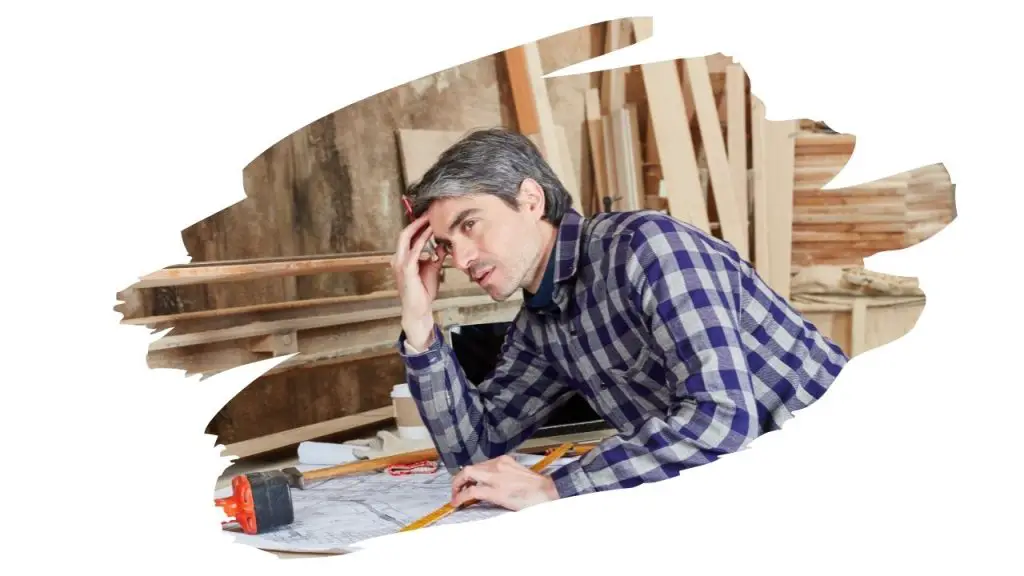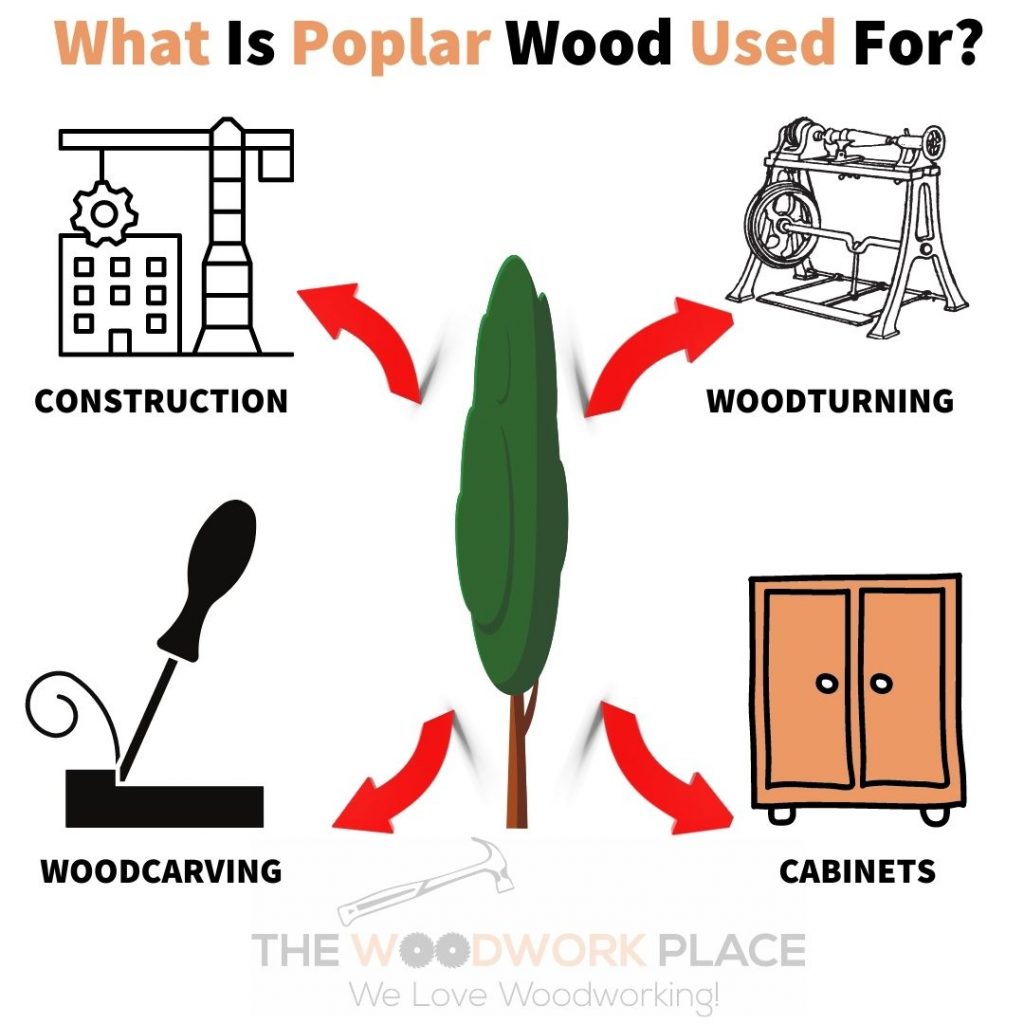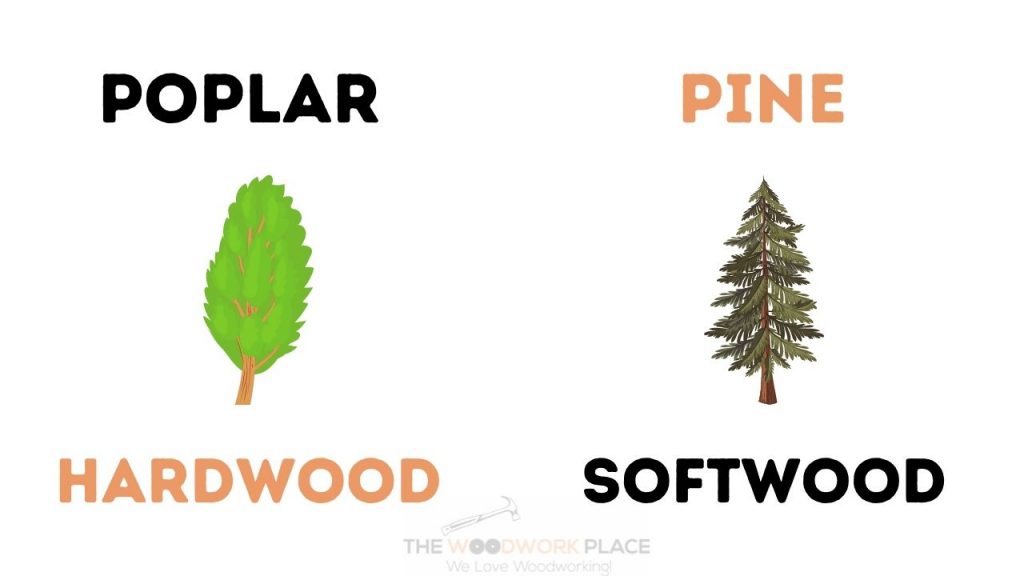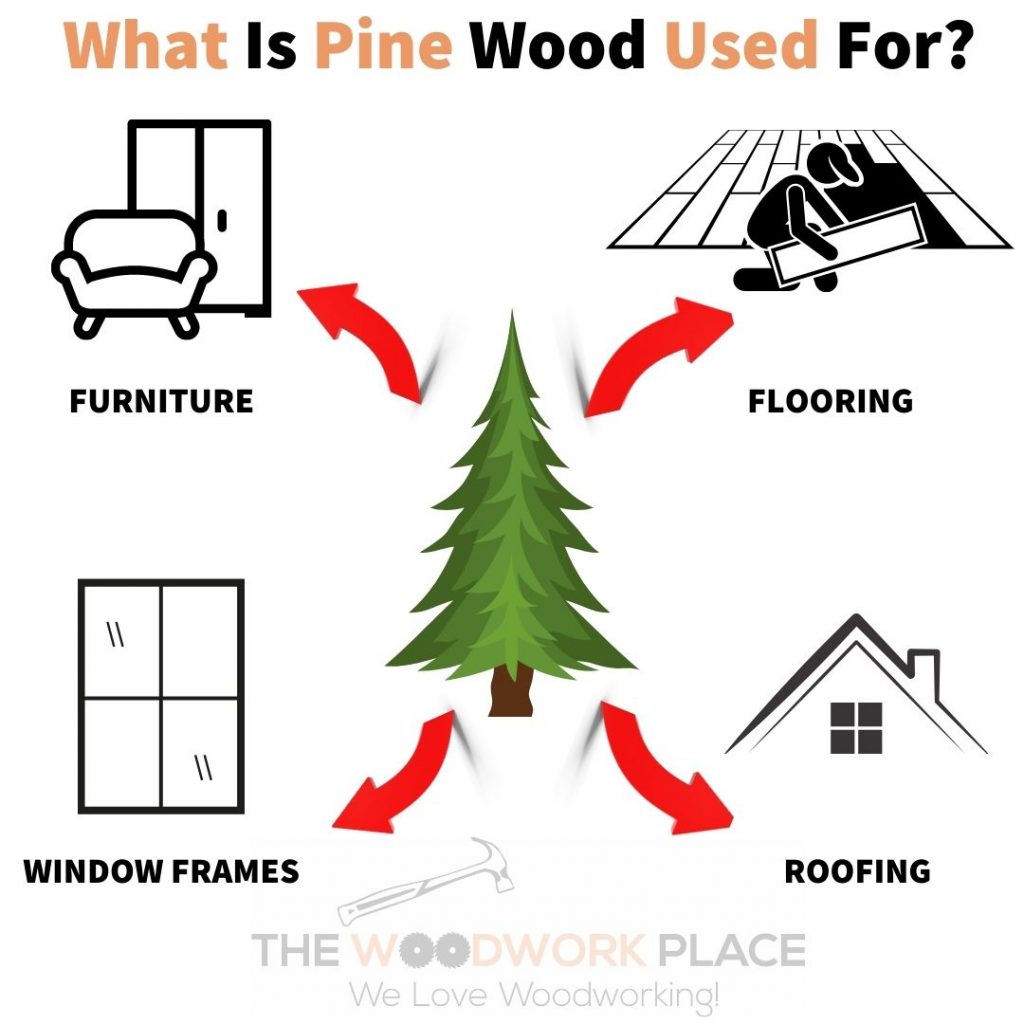When it comes to making furniture, the choice between Poplar and Pine seems a no-brainer. Pine is generally more expensive, so it must be better, right?
Well, the answer isn’t so straight forward when it comes to Poplar Wood vs Pine.
Despite being classed as a hardwood, Poplar is in fact easier to work with and machine compared to Pine. However, Pine softwood types such as Yellow Pine and Radiata, are much more durable and long-lasting compared to Poplar lumber.
Still, having said all of that, durability and workability are just two factors you need to consider, when it comes down to choosing between these well-liked timbers.
So keep reading to discover what really separates Poplar Wood from Pine, and which lumber is the best choice for your next woodwork project…

This post may contain affiliate links to products that we receive a commission for (at no additional cost to you). Learn more here.
1. Poplar vs Pine For Shelves: Which One Holds Up Better?
When it comes to choosing wood for shelving, there is one key thing you need to think about… shelf sagging.
And just what are sagging shelves? Well, these are shelves that are starting to bend and sag in the middle due to stress put on it by weighty objects.
They not only look bad, but they can pose a safety hazard too. Especially as you risk them coming crashing down at any moment.
Now, there are two things you need to do in order to avoid shelves from sagging:
A). Simply reinforce them and add supporting brackets.
B). Use a wood type that is pretty stiff and stable.
Now, when it comes to stiffness, Poplar just about beats out Pine.
And how do we measure the stiffness of lumber? By using an engineering formula called the ‘Modulus of Elasticity’. The higher the modulus of elasticity, the stiffer the lumber.
Pine has a lower modulus of elasticity than Poplar, so it is less stiff in comparison.
So, based on shelving, Poplar just about beats out Pine as the better choice.
Poplar and Pine aren’t your only options for a shelf. Manufactured wood types, such as Plywood, can also make for decent shelving material too. Learn more by checking out our post: OSB vs Plywood For Your Shelves: 3 Key Things You Need To Consider
But, Is Pine Wood Good For Shelving Anyway?
If your heart is set on Pine wood shelving, then Pine will do a perfectly good job at holding up shelving loads.

2. Poplar vs Pine Durability: Which One Lasts Longer?
For a durable wood that can handle a lifetime of dents and dints, most types of Pine do a better job than Poplar.
We know this all thanks to something called the Janka Scale.
The Janka Scale, also referred to as the Janka Hardness Test, is how we measure how well a sample of wood holds up against wear and tear.
The test involves smashing a small steel ball into a piece of wood. And the tougher it is for that steel ball to embed into the wood, the higher that wood’s Janka rating. So, wood types with high Janka ratings have high durability.
Now, most types of Pine have a much higher Janka rating than Poplar. Poplar wood has a Janka hardness rating of 540 lbf (which means it takes 540 lbs of force to dent this lumber). While Southern Yellow Pine has an even bigger Janka hardness rating of 690 lbs.
So, based on durability, Pine is the better option.
What A Second… Is Poplar A Hardwood?
Poplar wood is technically classified as a hardwood.
Despite this, it’s actually fairly soft as far as hardwoods go. That’s why it’s decent practice wood choice for folks who are just getting started with whittling.
In fact, we’ve written a whole article exploring why poplar can be such a good choice for beginner whittlers – you can check it out here if you want to learn more: Is Poplar Wood Good For Carving? (Solved!)
Not only is poplar good for carving, it’s good for wood burning too. Its light brown color and creamy grain make it the ideal wood for pyrography too.
The soft texture and light color create the perfect backdrop for your designs to really pop.
So, if you want to get into pyrography, definitely consider giving poplar a try. The wood’s properties make it great for beginners to learn on.
We’ve actually written a post all about using poplar for pyrography – check it out here if you want to learn some tips and tricks: Is Poplar Wood A Good Option For Pyrography?
So Is Pine Wood Always More Durable?
Well, Pine is a sturdy stable wood that can last up to 15 years once pressure-treated.
But, the type of Pine you have really matters. The much-favored Eastern Pine has a Janka hardness rating of just 380 lbf. Which means that this particular type of pine is less durable than Poplar.
Is Poplar Wood Strong? Yes, this hardwood is strong. In fact, it can even be used for construction grade lumber.
Related Post: Should You Use A Polyurethane Finish On Poplar Wood?
3. Poplar vs Pine For Cabinets: Which One Is Better For Indoor Furniture?
Crafting cabinets requires more finesse than putting up simple shelving. You need to get those cabinet joints just right, which means you need a wood type that is easy to work with and machines effortlessly.
So, choosing between Poplar and Pine for your cabinet is a pretty easy decision. Poplar is easier to handle, straightforward to plane down to shape, and it takes on a coat of paint better than Pine does too.
Plus, Poplar doesn’t have knots like Pine does. And as anyone who has worked with pine before can attest to, knotty wood can be a nightmare to work with at the best of times.

These are just a few of the reasons why Poplar is also so great for wood carving as well. In fact, if you’ve ever dabbled in the art of wood whittling, then you should really check out our post all about Poplar Wood for carving. We break down why Poplar is such a great affordable choice for whittling and chip carving crafts. You can check it out by clicking here: ‘Is Poplar Wood Good For Carving? (Solved!)’.
So, based on cabinet making, Poplar is your better option here.
Which One Is Better When It Comes To Poplar Wood vs Pine For A Crib? Poplar wood, thanks to its uniform straight grain, is less likely to splinter than Pine. Which is one of the reasons why it is a common choice for making children’s toys and the like. However, either Poplar or Pine can be good choices for a crib.
4. Poplar vs Pine For Outdoor Furniture: Which One Can Really Weather The Storm?
First things first, neither Poplar nor Pine are naturally resistant to decay.
If left untreated, Poplar lasts only around 3 to 4 years. Pine wood, on the other hand, doesn’t fare much better at a mere 5 or so years.
However, when either of these wood types are pressure treated, they can be used on outdoor structures (provided they’ve been properly sealed).
And why is that? Well, because when wood is pressure treated it is infused with wood preservatives designed to make the wood more resistant to wood rot, termites, and even fire.
But Isn’t Poplar More Water Resistant Than Pine?
Treated poplar wood is more moisture resistant than untreated poplar. However it still doesn’t hold up well when regularly drenched in water.
So even though you can use Poplar for construction, it is better used on those interior construction areas that won’t get directly rained upon.
On the other hand, pressure-treated pine can hold up well against outdoor elements, making it a fairly decent choice for outdoor furniture.
So, based on outdoor furniture, Pine is your best choice between these two types of lumber.
Do Termites Eat Pine Wood? Yes, termites will happily eat through untreated lumber of all types – provided the wood is soft and damp enough.

5. Poplar vs Pine Stains: Which One Stains Better?
Both Poplar and Pine don’t take on stains well. Or at all, really. In fact, applying wood stain directly onto these two wood types will do little more than leave behind unsightly results.
Pines unevenly dense grain means the stain won’t penetrate the wood evenly (resulting in blotchiness). While Poplar just shrugs off stain like water shaken off a shaggy dogs back.
So, based on staining, neither one wins and it is a poor draw between the two.
So, Does Poplar Wood Need Wood Conditioner?
Yes it does. You will need to apply wood conditioner before adding a stain coat on top.
In fact, we have a whole blog post all about applying wood conditioner (and whether or not wood conditioner is even necessary in the first place). It should really help you out and you can read it by clicking here: ‘Should I Apply Wood Conditioner Before Danish Oil (Explained)’.
So, To Sum Up, Is Poplar Or Pine Wood Better?
Well, the choice between the two is pretty simple. If you want to make indoor furniture or small handcrafted items, then Poplar wood is the obvious choice. This is because it is easier to craft and machine than Pine. However, if you want to make outdoor furniture, then Pine beats out Poplar every time, thanks to its long-lasting durability.


